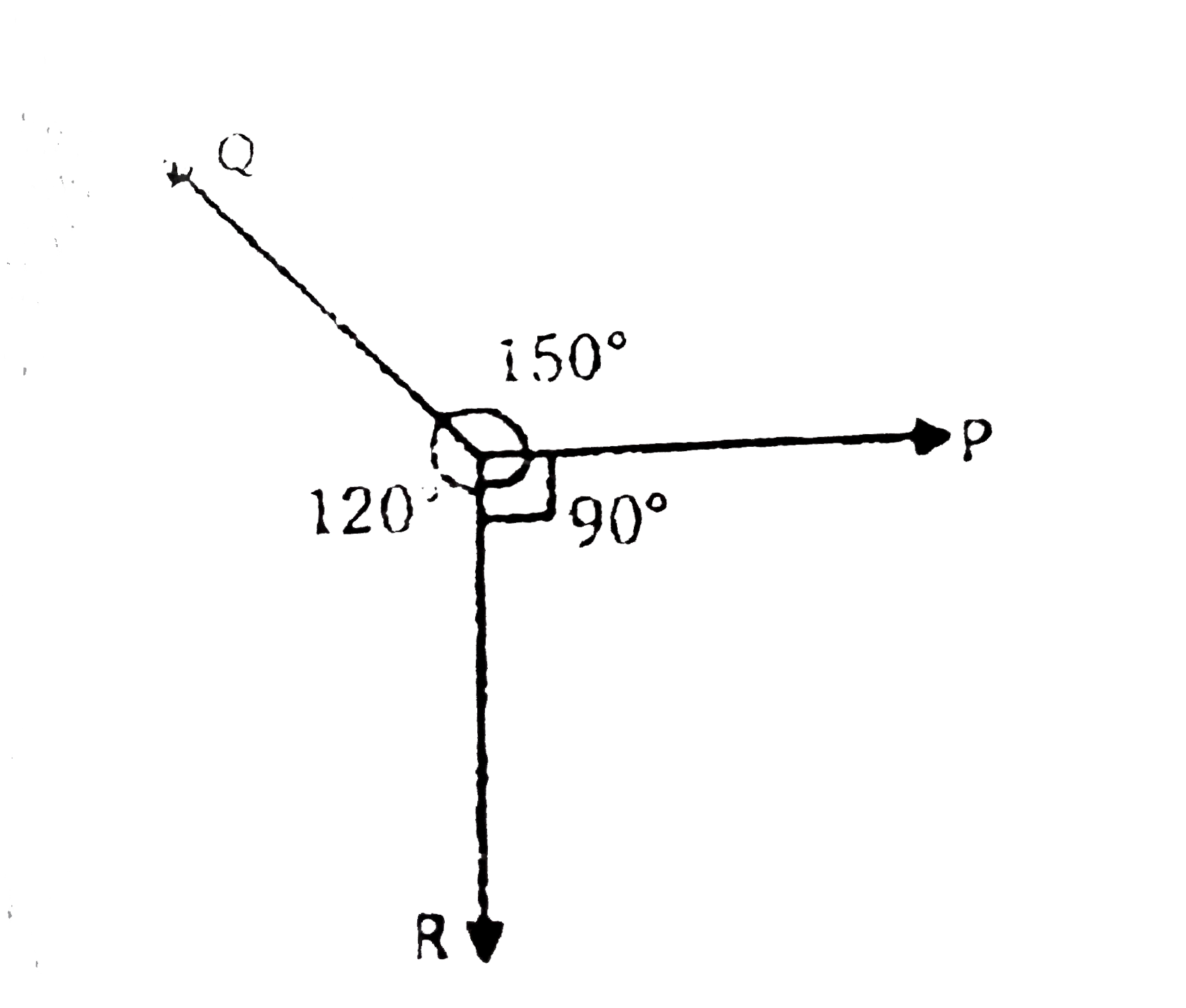Three forces P,Q and R are acting at a point in the plane. The angle between P & Q and Q & R are 150∘&120∘ respectively, then for equilibrium, forces P,Q & R are in the ratio
1:2:3
1:2:√3
3:2:1
√3:2:1
The correct Answer is:D

Psin120∘=Qsin90∘=Rsin150∘
⇒P√3/2=Q1=R1/2
⇒2P√3=Q1=2R1=k (constant)
⇒P:Q:R=√3k2:k:k2=√3:2:1
Topper's Solved these Questions
- MISCELLANEOUSBOOK - ALLENCHAPTER - MISCELLANEOUSEXERCISE - Exercise-03
1 Videos
- MISCELLANEOUSBOOK - ALLENCHAPTER - MISCELLANEOUSEXERCISE - Exercise-04
1 Videos
- MISCELLANEOUSBOOK - ALLENCHAPTER - MISCELLANEOUSEXERCISE - Exersice -05(B)
20 Videos
- KINEMATICS (MOTION ALONG A STRAIGHT LINE AND MOTION IN A PLANE)BOOK - ALLENCHAPTER - KINEMATICS (MOTION ALONG A STRAIGHT LINE AND MOTION IN A PLANE)EXERCISE - BEGINNER S BOX-7
8 Videos
- PHYSICAL WORLD, UNITS AND DIMENSIONS & ERRORS IN MEASUREMENT BOOK - ALLENCHAPTER - PHYSICAL WORLD, UNITS AND DIMENSIONS & ERRORS IN MEASUREMENT EXERCISE - EXERCISE-IV
8 Videos
Similar Questions
Knowledge Check
Three forces P, Q, R are acting at a point in a plane. The angle between P and Q and Q and R are 150∘and120∘ respectively, then for equilibrium, forces P, Q, R are in the ratio
A1:2:3B1:2:31/2C3:2:1D31/2:2:1Three forces P, Q and R are acting on a particel in the plane, the angle between P and Q and that between Q and R are 150∘ and 120∘ respectively. Then for equilibrium, forces P, Q and R are in the ratio
A1:2:3B1:2:√3C3:2:1D√3:2:1Given that P 12, Q = 5 and R = 13 also P+Q=R, then the angle between P and Q will be
AπBπ2CzeroDπ4
If vector P,QandR have magnitude 5,12,and 13 units and →P+→Q=→R, the angle between Q and R is
View SolutionForces P and Q acting at a point O make an angle 150∘ between them. Their resultant acts at O, has magnitude 2 units and is perpendicular to P. Then in the same unit, the magnitudes of P and Q are
View SolutionThe resultant of forces P and Q acting at a point including a certain angle α is R, that of the forces 2P and Q acting at the same angle is 2R and that of P and 2Q acting at the supplementary angle is 2R. Then P:Q:R=
View SolutionIf the resultannt of two forces of magnitudes P and Q acting at a point at an angle of 60∘ is √7Q, then P/Q is
View SolutionIf the resultant of two forces of magnitudes P and Q acting at a point at an angle of 60∘ is √7Q , then P/Q is
View Solution
